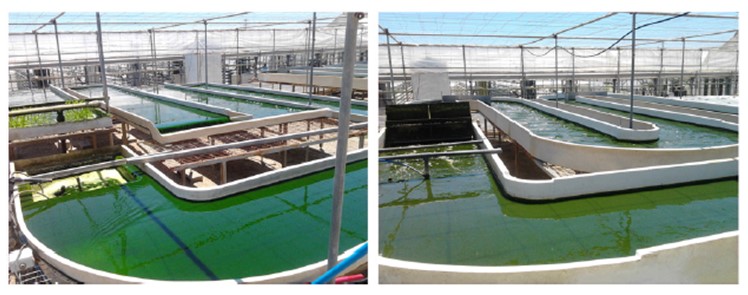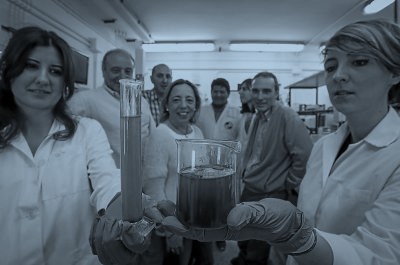
Livestock farming is one of the most important socioeconomic pillars in our country, being a sector that is inherently linked to the generation of slurry, a type of waste that is very abundant and difficult to manage. However, since they contain high amounts of organic matter and nutrients, they can be managed as a raw material with great bioeconomic potential from which to recover bioproducts and energy. In this sense, the treatment of these waters with consortia of microalgae and bacteria not only allows purifying them to mitigate their effects on the environment, but also retain and accumulate their components.
The PURASOL project, funded by the Ministry of Science, Innovation and Universities in the 2017 Challenges call, aims to optimize the process of valorization of slurry using microalgae, recovering its nutrients. In previous works, the Environmental Technology team coordinated by Silvia Bolado has already confirmed the feasibility of using manure to produce algal biomass that could be used as biofertilizers, feed or biofuels, while improving the quality of the water. However, the productivity achieved could not be optimized, nor were other ways studied for its full use. The current project improves these processes, treating the key aspects of the design, development, optimization and control of the slurry treatment systems with microalgae. To achieve this, the Institute of Sustainable Processes of the University of Valladolid works in collaboration with experts from the University of Almeria, the Cajamar Foundation, the University of León and ITACyL

One of the lesser-known aspects that is being studied in this project is the presence of emerging pollutants and heavy metals in slurry. These pollutants persist both in the treated water and in the algal biomass generated, assuming a health and environmental risk and affecting the microbiology of the systems used, with the consequent negative effect on treatment capacity and recovery processes.
Other points addressed in the PURASOL project, are the recovery of water and the study of the populations of microalgae and bacteria that make up the algal biomass, which presents important variations depending on environmental and operating conditions. Thus, with the data collected, a predictive model of the operation of photobioreactors in different conditions is being developed to optimize the procedures for the valorization of the biomass generated, obtaining proteins for industrial application, additives for animal feed and, depending on the composition of extraction by-products, alcohols, polyesters or biogas.

In this way, PURASOL is focused on having optimized processes for the treatment of slurry with microalgae, that are technologically, economically and environmentally viable, and that guarantee the quality, safety and sustainability of the products generated and the treated water.



